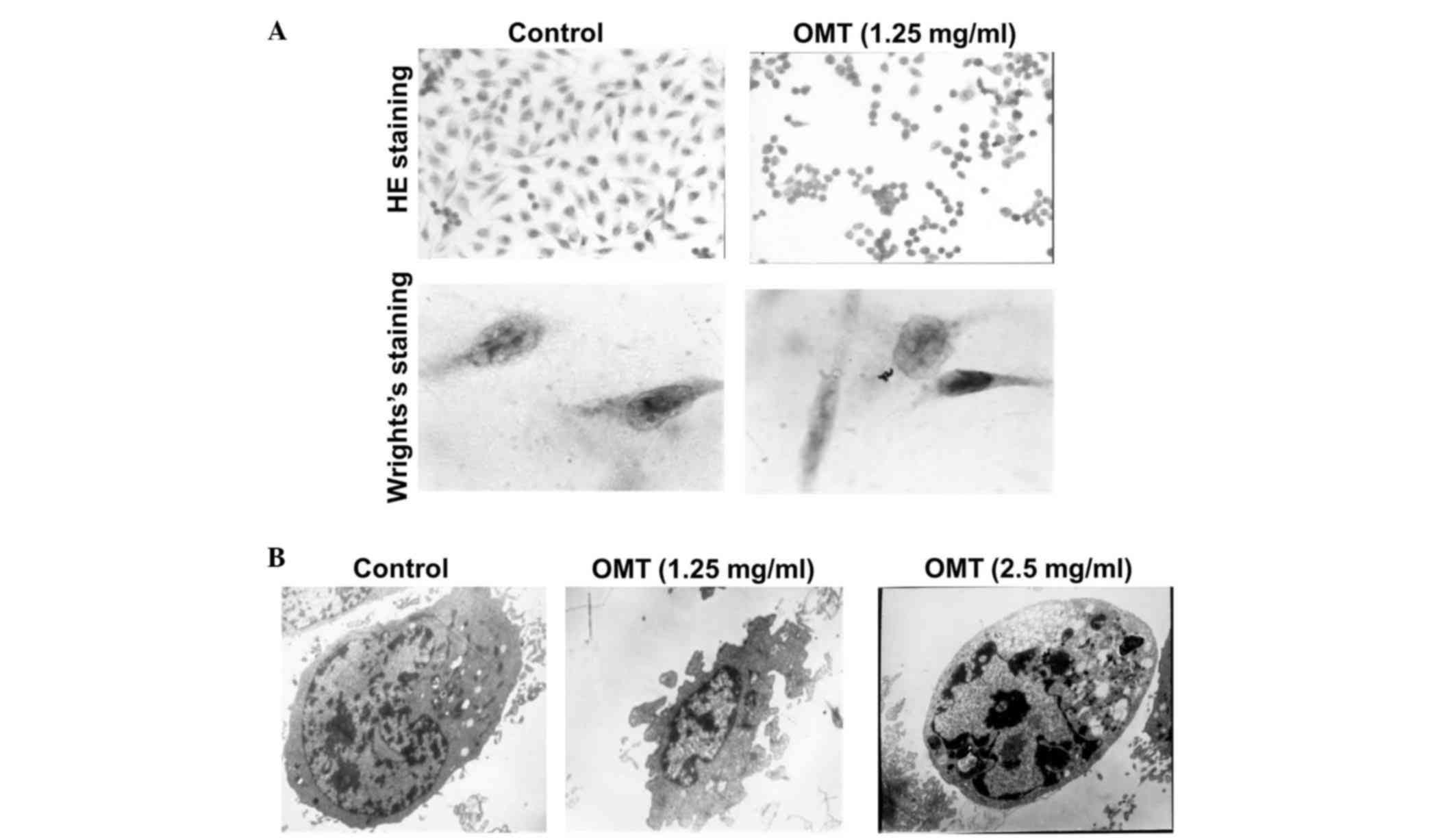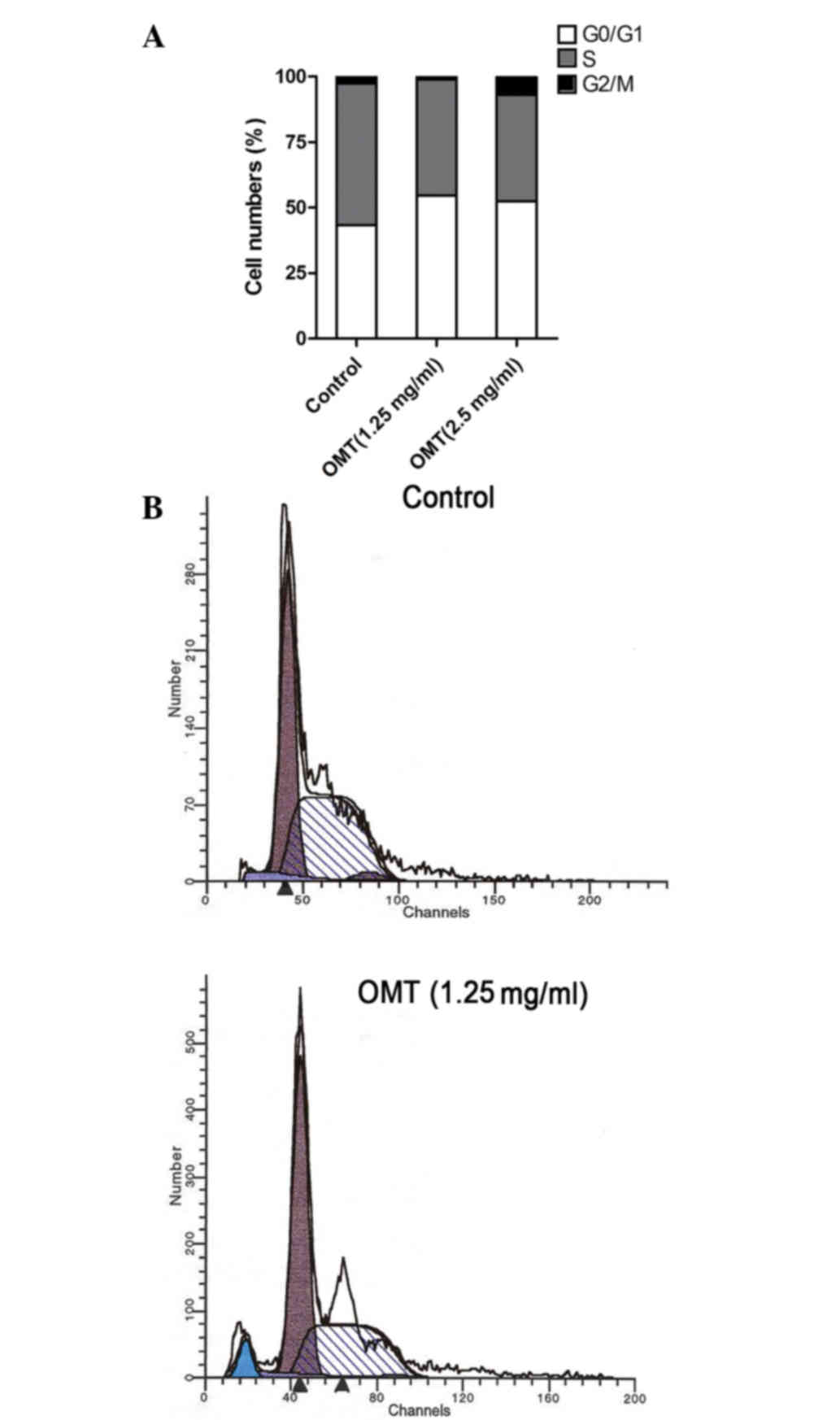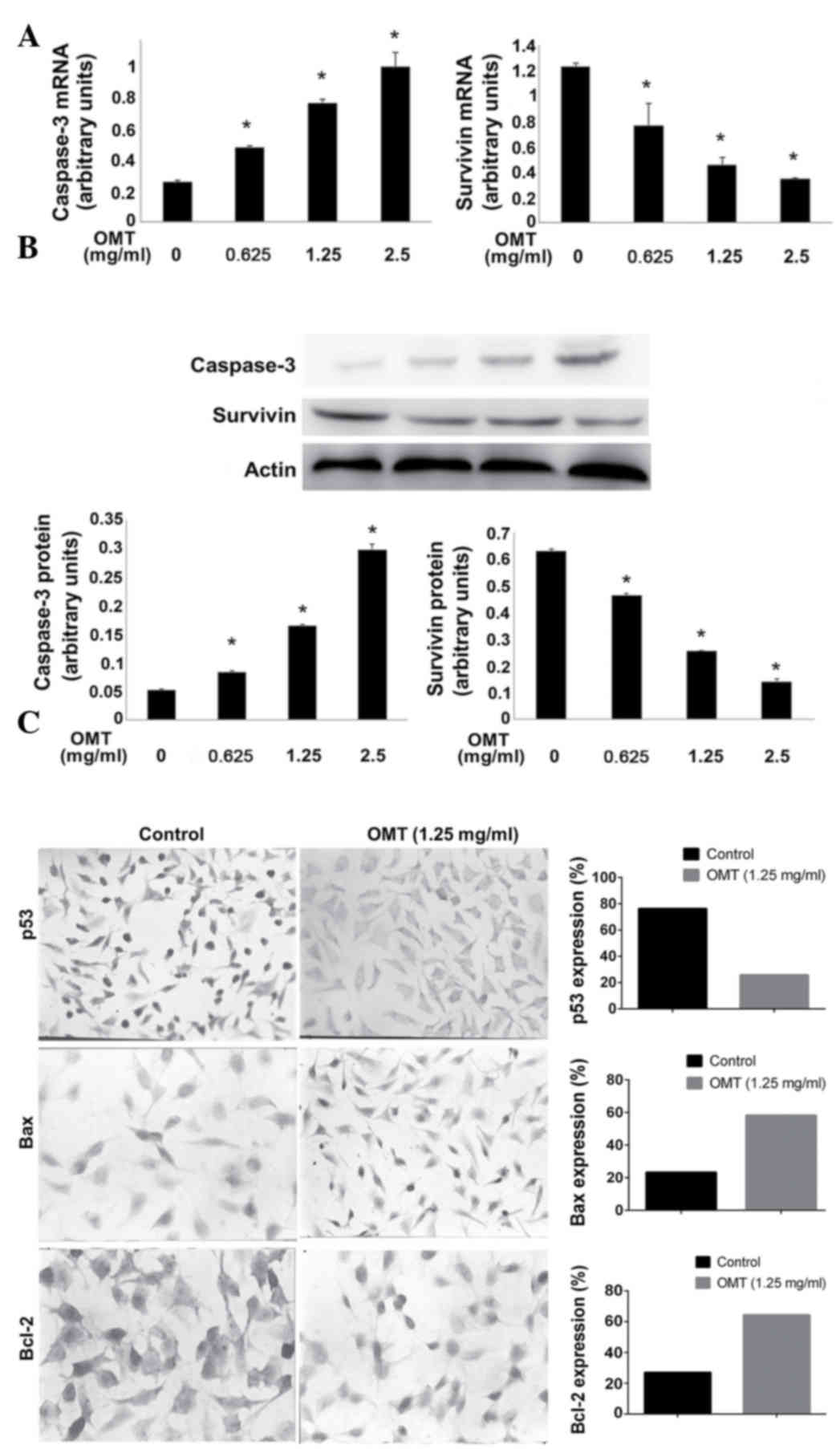|
1
|
Chou R, Gore JL, Buckley D, Fu R,
Gustafson K, Griffin JC, Grusing S and Selph S: Urinary Biomarkers
for diagnosis of bladder cancer: A systematic review and
meta-analysis. Ann Intern Med. 163:922–931. 2015. View Article : Google Scholar : PubMed/NCBI
|
|
2
|
Lee CY, Yang KL, Ko HL, Huang RY, Tsai PP,
Chen MT, Lin YC, Hwang TI, Juang GD and Chi KH: Trimodality
bladder-sparing approach without neoadjuvant chemotherapy for
node-negative localized muscle-invasive urinary bladder cancer
resulted in comparable cystectomy-free survival. Radiat Oncol.
9:2132014. View Article : Google Scholar : PubMed/NCBI
|
|
3
|
Ku JH, Kim M, Jeong CW, Kwak C and Kim HH:
Risk prediction models of locoregional failure after radical
cystectomy for urothelial carcinoma: external validation in a
cohort of Korean patients. Int J Radiat Oncol Biol Phys.
89:1032–1037. 2014. View Article : Google Scholar : PubMed/NCBI
|
|
4
|
Yoshida T, Okuyama H, Nakayama M, Endo H,
Nonomura N, Nishimura K and Inoue M: High-dose chemotherapeutics of
intravesical chemotherapy rapidly induce mitochondrial dysfunction
in bladder cancer-derived spheroids. Cancer Sci. 106:69–77. 2015.
View Article : Google Scholar : PubMed/NCBI
|
|
5
|
Liu YQ, Li Y, Qin J, Wang Q, She YL, Luo
YL, He JX, Li JY and Xie XD: Matrine reduces proliferation of human
lung cancer cells by inducing apoptosis and changing miRNA
expression profiles. Asian Pac J Cancer Prev. 15:2169–2177. 2014.
View Article : Google Scholar : PubMed/NCBI
|
|
6
|
Li W, Liang H, Yin T, Wang B and Zhao YY:
Main flavonoids from Sophora flavescenes. Yao Xue Xue Bao.
43:833–837. 2008.(In Chinese). PubMed/NCBI
|
|
7
|
Pan X, Wang L, Grundemann D and Sweet DH:
Inhibition of human organic cation transporters by the alkaloids
matrine and oxymatrine. Fitoterapia. 92:206–210. 2014. View Article : Google Scholar : PubMed/NCBI
|
|
8
|
Zhou Y, Xu W, Han R, Zhou J, Pan Z, Rong
H, Li J, Xu C, Qiao G and Lu Y: Matrine inhibits pacing induced
atrial fibrillation by modulating I(KM3) and I(Ca-L). Int J Biol
Sci. 8:150–158. 2012. View Article : Google Scholar : PubMed/NCBI
|
|
9
|
Zhang B, Liu ZY, Li YY, Luo Y, Liu ML,
Dong HY, Wang YX, Liu Y, Zhao PT, Jin FG and Li ZC:
Antiinflammatory effects of matrine in LPS-induced acute lung
injury in mice. Eur J Pharm Sci. 44:573–579. 2011. View Article : Google Scholar : PubMed/NCBI
|
|
10
|
Chuang CY, Xiao JG and Chiou GC: Ocular
anti-inflammatory actions of matrine. J Ocul Pharmacol. 3:129–134.
1987. View Article : Google Scholar : PubMed/NCBI
|
|
11
|
Yu JL, Li JH, Chengz RG, Ma YM, Wang XJ
and Liu JC: Effect of matrine on transforming growth factor β1 and
hepatocyte growth factor in rat liver fibrosis model. Asian Pac J
Trop Med. 7:390–393. 2014. View Article : Google Scholar : PubMed/NCBI
|
|
12
|
Ma X, Chen R, Liu X, Xie J, Si K and Duan
L: Effects of matrine on JAK-STAT signaling transduction pathways
in bleomycin-induced pulmonary fibrosis. Afr J Tradit Complement
Altern Med. 10:442–448. 2013.PubMed/NCBI
|
|
13
|
Zhang Y, Piao B, Zhang Y, Hua B, Hou W, Xu
W, Qi X, Zhu X, Pei Y and Lin H: Oxymatrine diminishes the side
population and inhibits the expression of β-catenin in MCF-7 breast
cancer cells. Med Oncol. 28:(Suppl 1). S99–S107. 2011. View Article : Google Scholar : PubMed/NCBI
|
|
14
|
Ling Q, Xu X, Wei X, Wang W, Zhou B, Wang
B and Zheng S: Oxymatrine induces human pancreatic cancer PANC-1
cells apoptosis via regulating expression of Bcl-2 and IAP
families, and releasing of cytochrome c. J Exp Clin Cancer Res.
30:662011. View Article : Google Scholar : PubMed/NCBI
|
|
15
|
Livak KJ and Schmittgen TD: Analysis of
relative gene expression data using real-time quantitative PCR and
the 2(−Delta Delta C(T)) Method. Methods. 25:402–408. 2001.
View Article : Google Scholar : PubMed/NCBI
|
|
16
|
Weintraub MD, Li QQ and Agarwal PK:
Advances in intravesical therapy for the treatment of non-muscle
invasive bladder cancer (Review). Mol Clin Oncol. 2:656–660.
2014.PubMed/NCBI
|
|
17
|
Willis DL, Flaig TW, Hansel DE, Milowsky
MI, Grubb RL, Al-Ahmadie HA, Plimack ER, Koppie TM, McConkey DJ,
Dinney CP, et al: Micropapillary bladder cancer: current treatment
patterns and review of the literature. Urol Oncol. 32:826–832.
2014. View Article : Google Scholar : PubMed/NCBI
|
|
18
|
Guo B, Zhang T, Su J, Wang K and Li X:
Oxymatrine targets EGFR(p-Tyr845) and inhibits EGFR-related
signaling pathways to suppress the proliferation and invasion of
gastric cancer cells. Cancer Chemother Pharmacol. 75:353–363. 2015.
View Article : Google Scholar : PubMed/NCBI
|
|
19
|
Ren H, Zhang S, Ma H, Wang Y, Liu D, Wang
X and Wang Z: Matrine reduces the proliferation and invasion of
colorectal cancer cells via reducing the activity of p38 signaling
pathway. Acta Biochim Biophys Sin (Shanghai). 46:1049–1055. 2014.
View Article : Google Scholar : PubMed/NCBI
|
|
20
|
Xie M, He G, Wang R, Shi S, Chen J, Ye Y,
Xie L, Yi X and Tang A: Matrine-induced apoptosis of human
nasopharyngeal carcinoma cells via in vitro vascular endothelial
growth factor-A/extracellular signal-regulated kinase1/2 pathway
inactivation. Horm Metab Res. 46:556–560. 2014. View Article : Google Scholar : PubMed/NCBI
|
|
21
|
Athanasoula KC, Gogas H, Polonifi K,
Vaiopoulos AG, Polyzos A and Mantzourani M: Survivin beyond
physiology: Orchestration of multistep carcinogenesis and
therapeutic potentials. Cancer Lett. 347:175–182. 2014. View Article : Google Scholar : PubMed/NCBI
|
|
22
|
Suzuki A, Ito T, Kawano H, Hayashida M,
Hayasaki Y, Tsutomi Y, Akahane K, Nakano T, Miura M and Shiraki K:
Survivin initiates procaspase 3/p21 complex formation as a result
of interaction with Cdk4 to resist Fas-mediated cell death.
Oncogene. 19:1346–1353. 2000. View Article : Google Scholar : PubMed/NCBI
|
|
23
|
Schmitt CA, Fridman JS, Yang M, Baranov E,
Hoffman RM and Lowe SW: Dissecting p53 tumor suppressor functions
in vivo. Cancer Cell. 1:289–298. 2002. View Article : Google Scholar : PubMed/NCBI
|
|
24
|
Hollstein M, Sidransky D, Vogelstein B and
Harris CC: p53 mutations in human cancers. Science. 253:49–53.
1991. View Article : Google Scholar : PubMed/NCBI
|
|
25
|
Wang W, Ho WC, Dicker DT, MacKinnon C,
Winkler JD, Marmorstein R and El-Deiry WS: Acridine derivatives
activate p53 and induce tumor cell death through Bax. Cancer Biol
Ther. 4:893–898. 2005. View Article : Google Scholar : PubMed/NCBI
|
|
26
|
Kunze D, Kraemer K, Erdmann K, Froehner M,
Wirth MP and Fuessel S: Simultaneous siRNA-mediated knockdown of
antiapoptotic BCL2, Bcl-xL, XIAP and survivin in bladder cancer
cells. Int J Oncol. 41:1271–1277. 2012.PubMed/NCBI
|
|
27
|
Hussain SA, Ganesan R, Hiller L, Murray
PG, el-Magraby MM, Young L and James ND: Proapoptotic genes BAX and
CD40L are predictors of survival in transitional cell carcinoma of
the bladder. Br J Cancer. 88:586–592. 2003. View Article : Google Scholar : PubMed/NCBI
|













